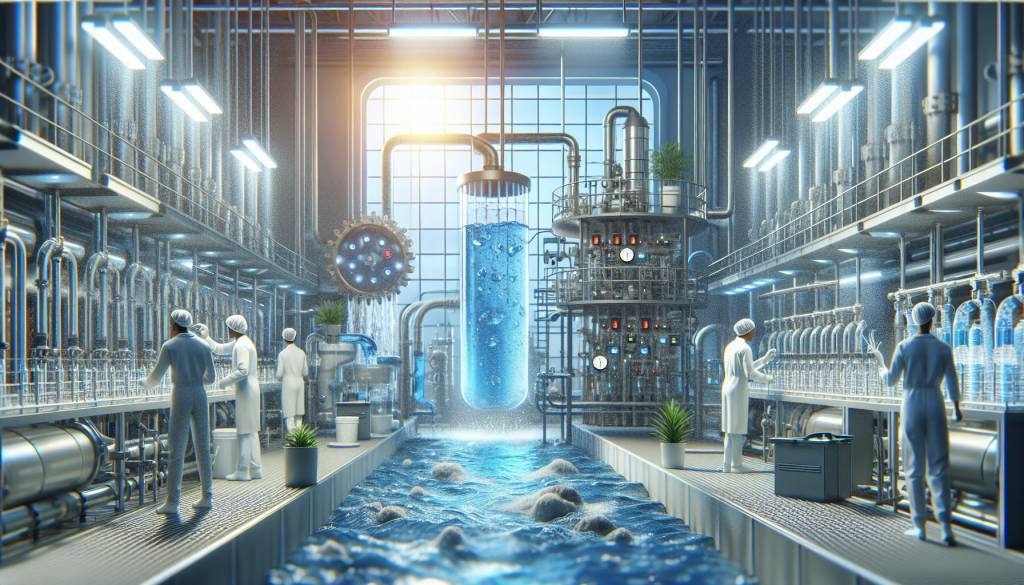Introduction to Water Purification
Access to clean drinking water is a fundamental human right, yet millions around the world still lack this basic necessity. Water purification methods play a crucial role in ensuring safe, potable water for consumption and daily use. This comprehensive guide explores various techniques and technologies used to purify water, from ancient practices to modern innovations.
The Importance of Water Purification
Clean water is essential for human health and well-being. Contaminated water can lead to numerous waterborne diseases, making purification a critical process. Whether you’re at home, traveling, or in an emergency situation, understanding different water purification methods can help you make informed decisions about your water consumption.
Common Water Contaminants
Before delving into purification methods, it’s important to understand what we’re purifying water from. Common contaminants include:
- Microorganisms (bacteria, viruses, protozoa)
- Chemicals (pesticides, heavy metals, chlorine)
- Sediments and particulates
- Organic matter
Different purification methods target specific types of contaminants, which is why a multi-barrier approach is often recommended for comprehensive water treatment.
Physical Water Purification Methods
Physical methods involve removing contaminants without altering the chemical composition of water. These techniques are often the first line of defense in water purification.
Filtration
Filtration is one of the most common and effective physical purification methods. It involves passing water through a material with tiny pores to remove particles and some microorganisms. Various types of filters include:
- Activated carbon filters
- Ceramic filters
- Sand filters
- Membrane filters (including reverse osmosis systems)
Each type of filter has its strengths and limitations. For instance, activated carbon is excellent at removing chlorine and improving taste, while reverse osmosis can remove a wide range of contaminants, including dissolved solids.
Boiling
Boiling is one of the oldest and most reliable methods of water purification. It effectively kills most microorganisms, making it particularly useful in emergency situations or when traveling. However, boiling does not remove chemical contaminants or improve taste.
Distillation
Distillation involves boiling water and collecting the condensed steam. This process removes most contaminants, including minerals, leaving highly purified water. However, it’s energy-intensive and can remove beneficial minerals along with contaminants.
Chemical Water Purification Methods
Chemical methods involve adding substances to water to neutralize or remove contaminants. These methods are often used in combination with physical methods for more comprehensive purification.
Chlorination
Chlorine is widely used in municipal water treatment systems due to its effectiveness in killing microorganisms. It’s also relatively inexpensive and easy to use. However, some people dislike the taste of chlorinated water, and there are concerns about potential health effects of long-term exposure to chlorine by-products.
Iodine
Iodine is another chemical disinfectant, often used in portable water purification systems for hikers and travelers. It’s effective against many microorganisms but may not be suitable for long-term use due to potential health effects.
Ultraviolet (UV) Purification
While technically a physical method, UV purification is often grouped with chemical methods. UV light disrupts the DNA of microorganisms, rendering them harmless. This method is effective against a wide range of pathogens and doesn’t alter the taste of water. However, it doesn’t remove chemical contaminants or particulates.
Advanced Water Purification Technologies
As water scarcity becomes a growing concern globally, researchers and engineers are developing innovative purification technologies to address complex water quality issues.
Nanotechnology
Nanomaterials are being explored for their potential in water purification. These materials can target specific contaminants with high efficiency. For example, nanoscale iron particles can remove heavy metals and organic compounds from water.
Photocatalytic Purification
This emerging technology uses light-activated catalysts to break down contaminants. It shows promise in removing persistent organic pollutants and killing pathogens.
Membrane Distillation
This technology combines the principles of distillation and membrane filtration. It can produce high-quality water from seawater or highly contaminated sources with less energy than traditional distillation.
Choosing the Right Purification Method
Selecting the appropriate water purification method depends on various factors, including:
- Source water quality
- Intended use of the water
- Available resources and infrastructure
- Local regulations and standards
For home use, a combination of methods is often recommended. For example, a water dispenser with a multi-stage filtration system can provide convenient access to clean drinking water.
The Future of Water Purification
As global water challenges intensify, the field of water purification continues to evolve. Future trends may include:
- Integration of artificial intelligence for optimized water treatment
- Development of more sustainable and energy-efficient purification methods
- Increased focus on removing emerging contaminants like pharmaceuticals and microplastics
- Decentralized water treatment systems for rural and developing areas
The Impact of Clean Water on Health
The importance of water purification extends beyond just quenching thirst. Clean water is fundamental to public health, sanitation, and overall quality of life. Access to purified water can significantly reduce the incidence of waterborne diseases and improve community health outcomes. To learn more about the crucial relationship between water and health, explore our dedicated resources.
Environmental Considerations
While water purification is essential for human health, it’s important to consider the environmental impact of different methods. Some purification processes can be energy-intensive or produce waste products. As we advance in water purification technology, there’s a growing emphasis on developing eco-friendly methods that minimize environmental harm while maximizing water quality.
Final Thoughts
Water purification is a complex and evolving field, crucial for ensuring access to clean, safe drinking water worldwide. From simple boiling to advanced nanotechnology, each method has its place in the purification landscape. As we face growing water challenges, continued innovation in purification technologies will be essential for meeting global water needs sustainably.
By understanding various water purification methods, individuals can make informed decisions about their water consumption and contribute to broader efforts in water conservation and quality improvement. Whether you’re selecting a home filtration system or advocating for better water infrastructure, knowledge of water purification is a powerful tool in the quest for clean, safe water for all.
